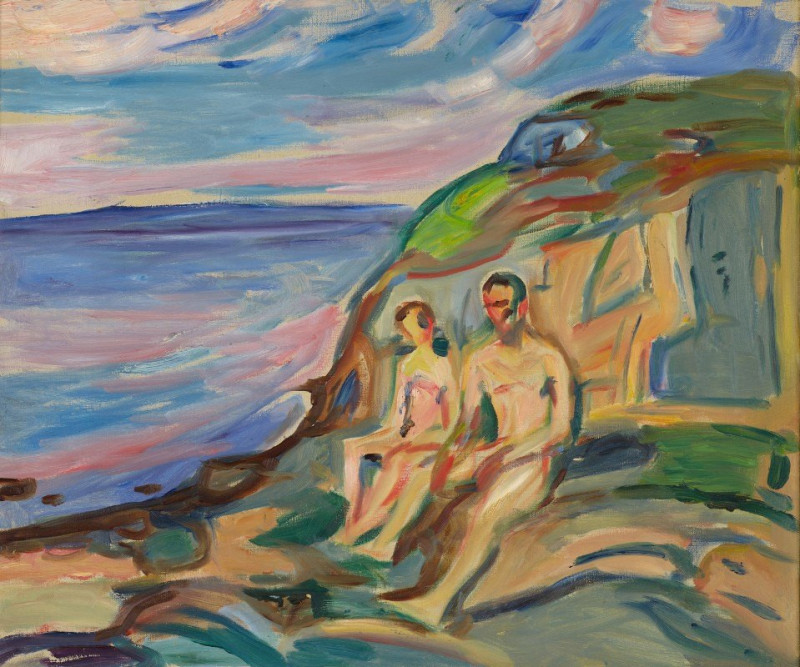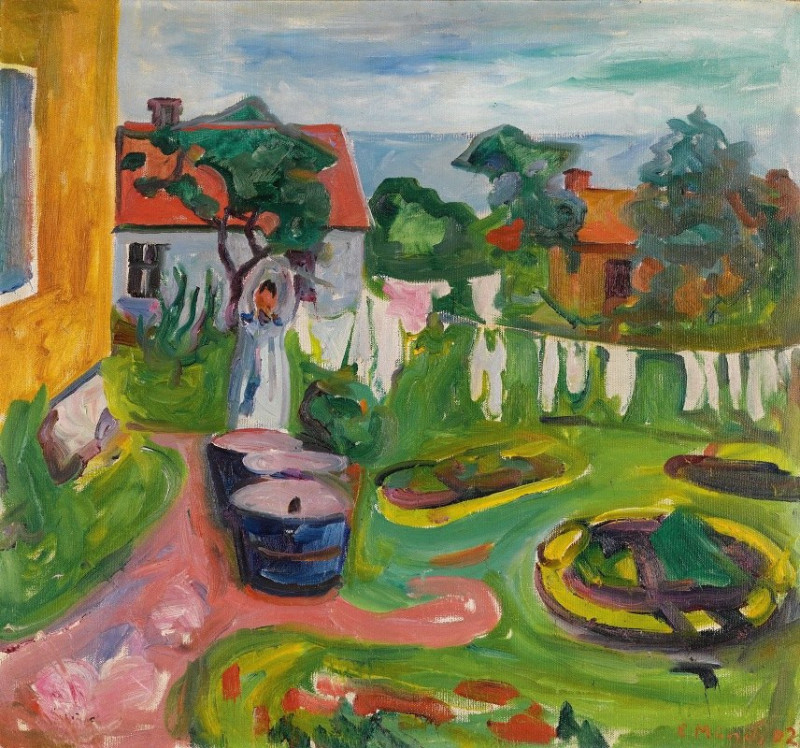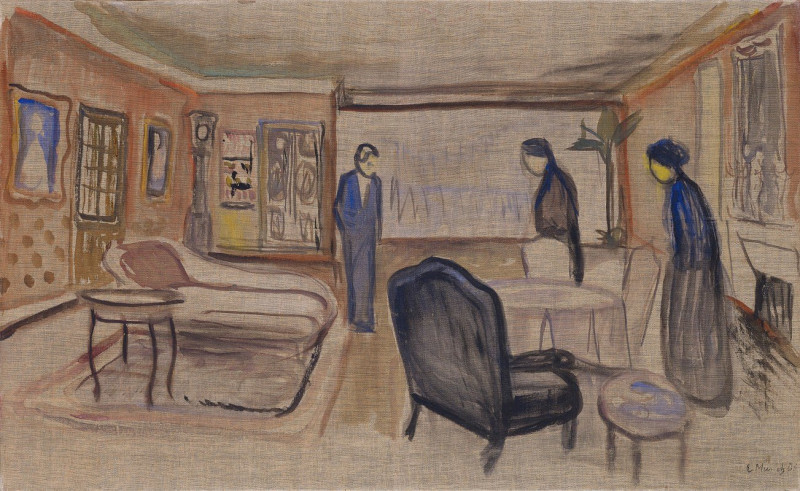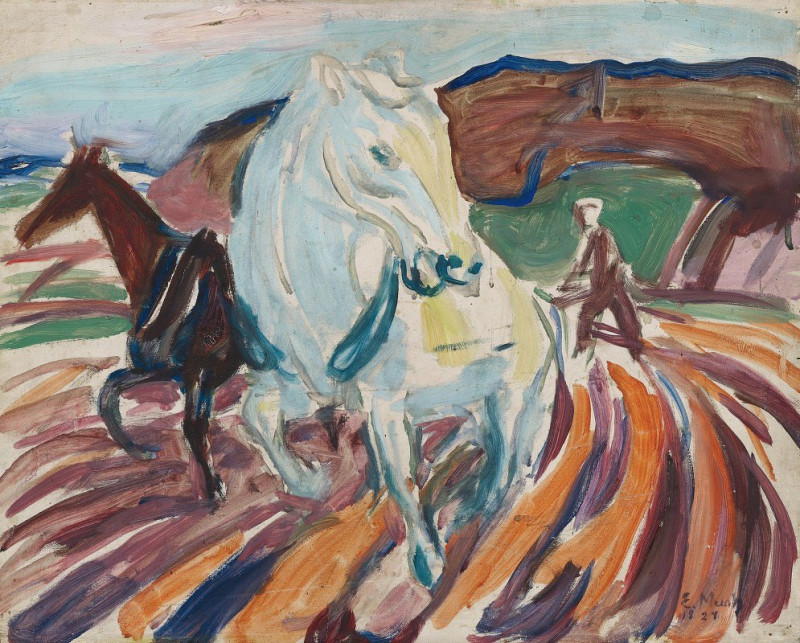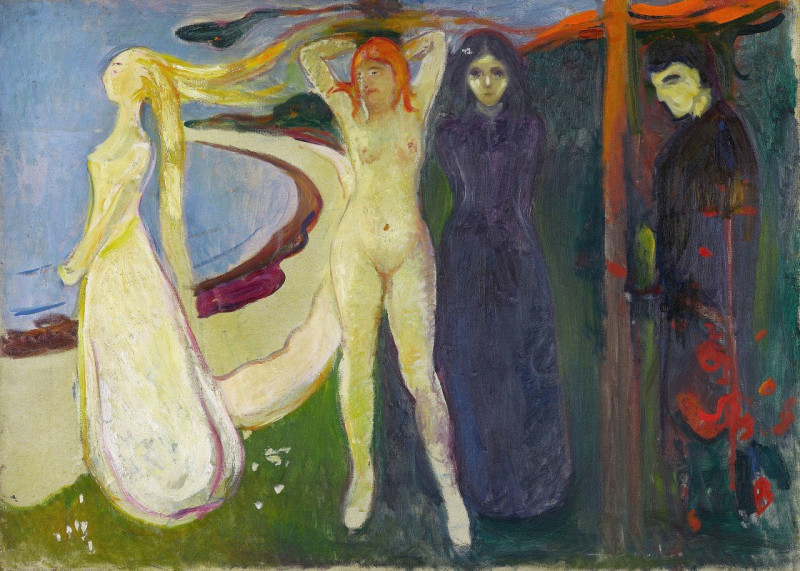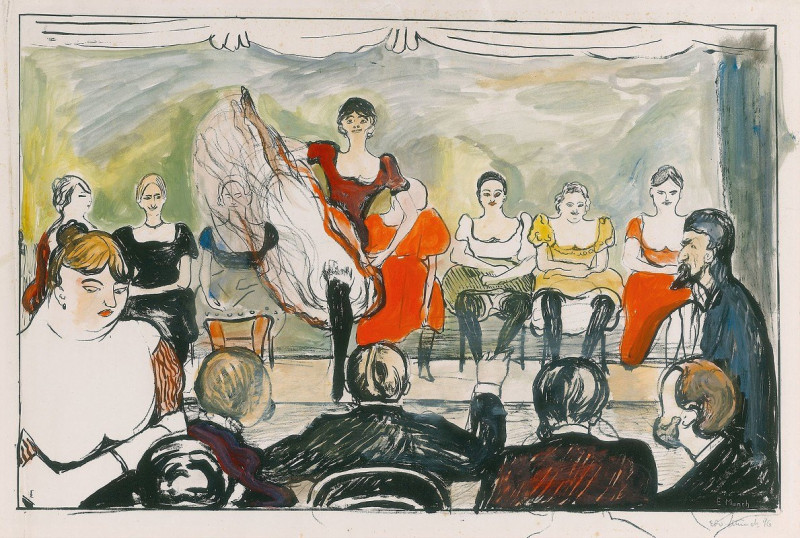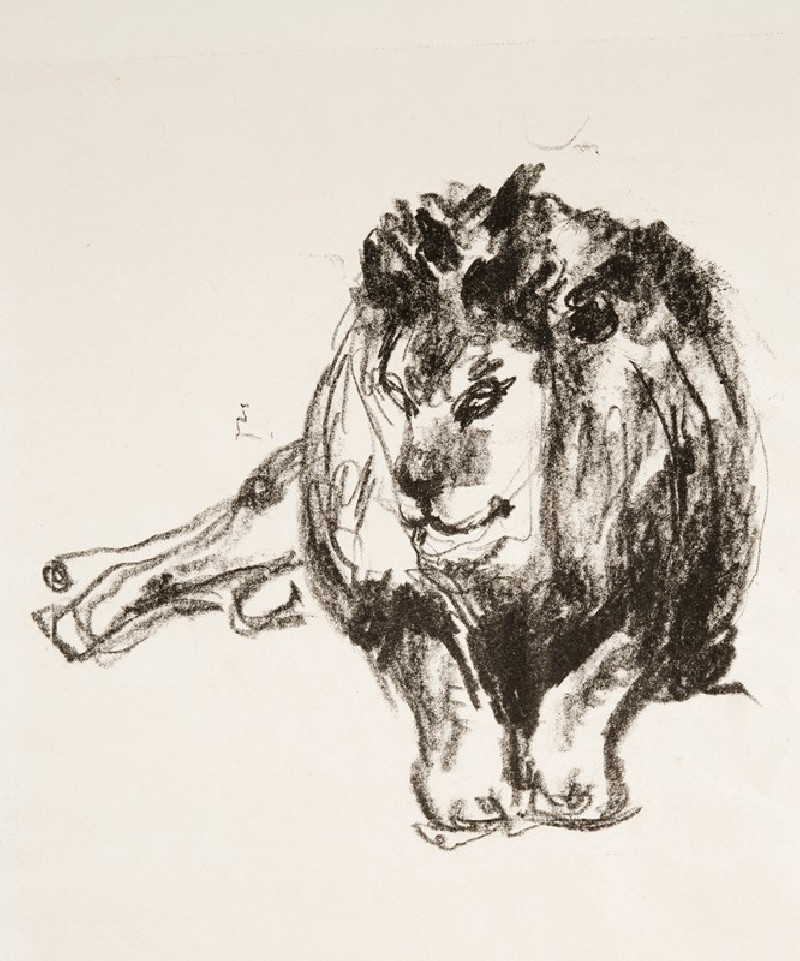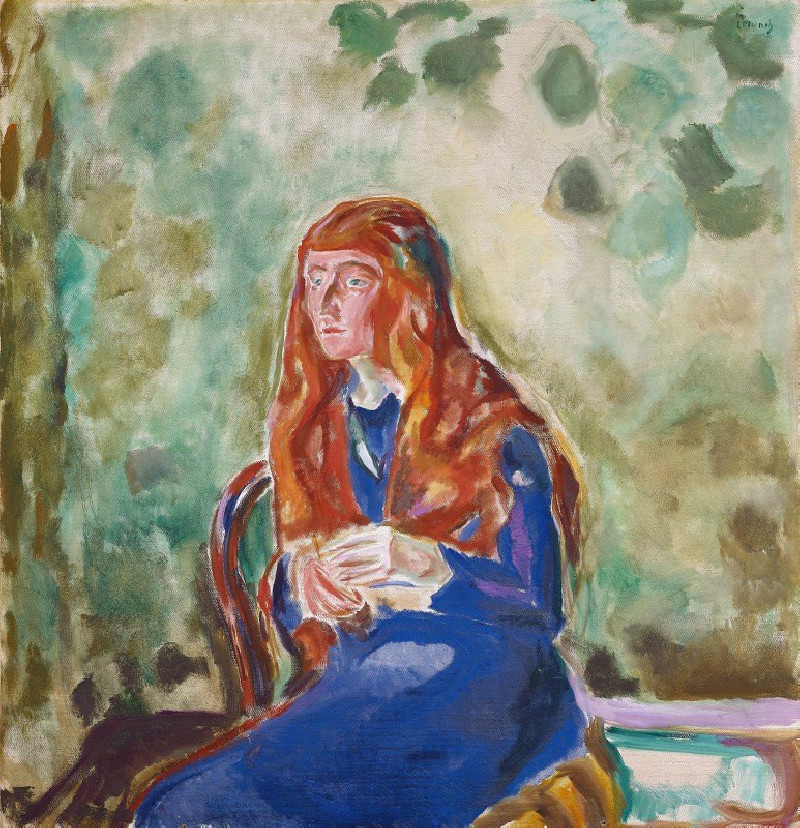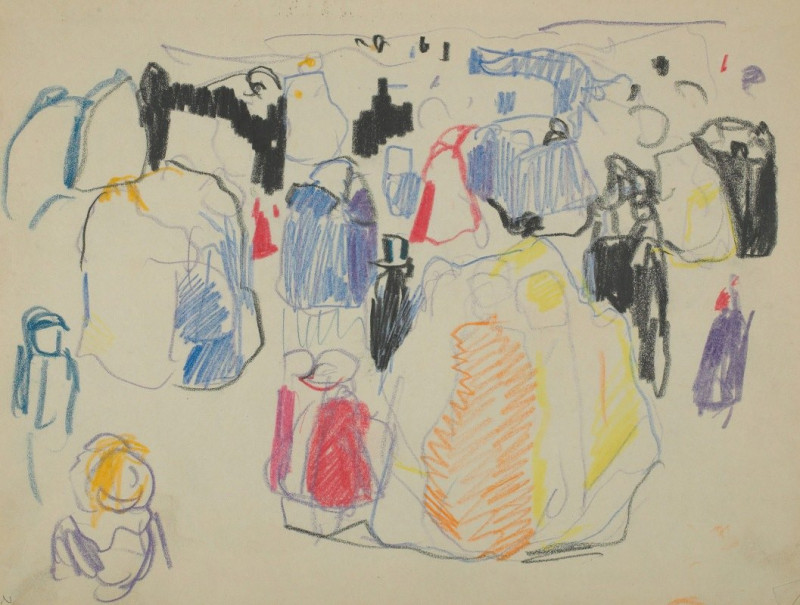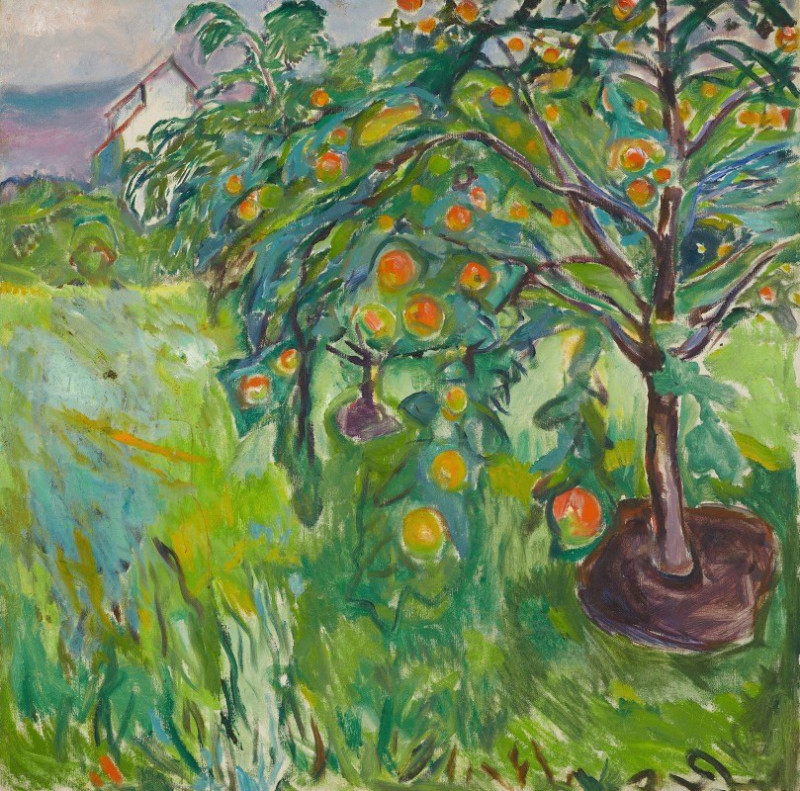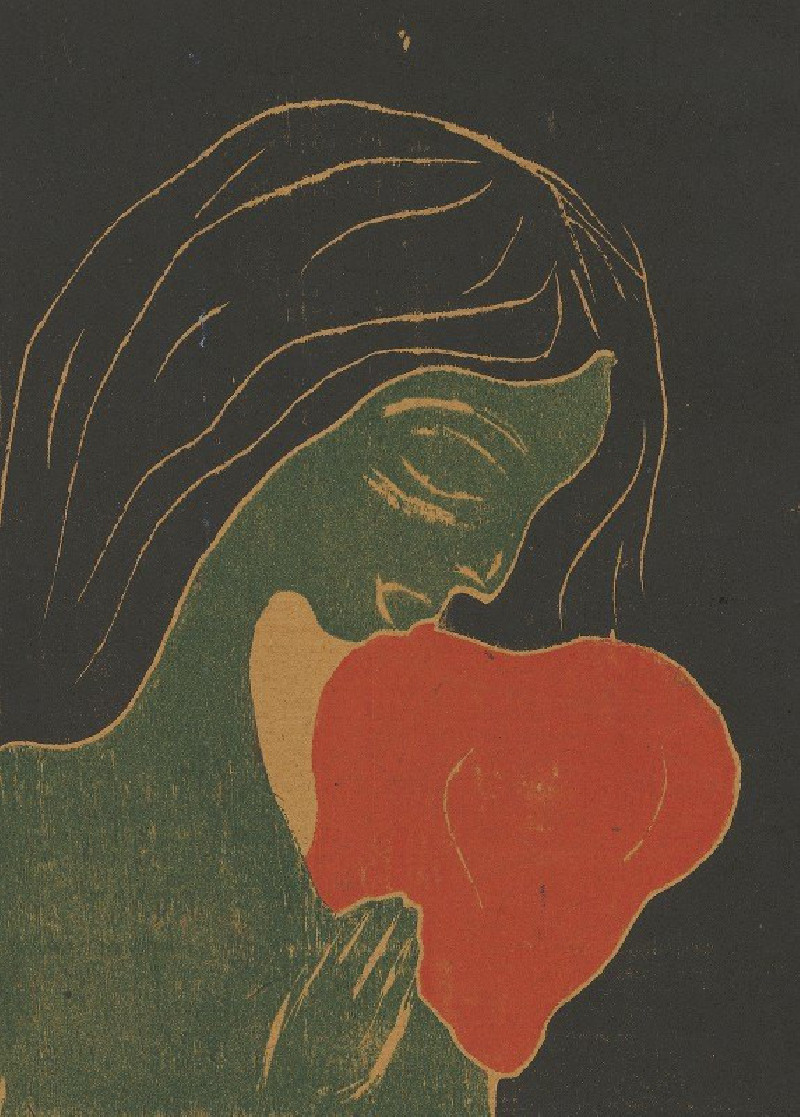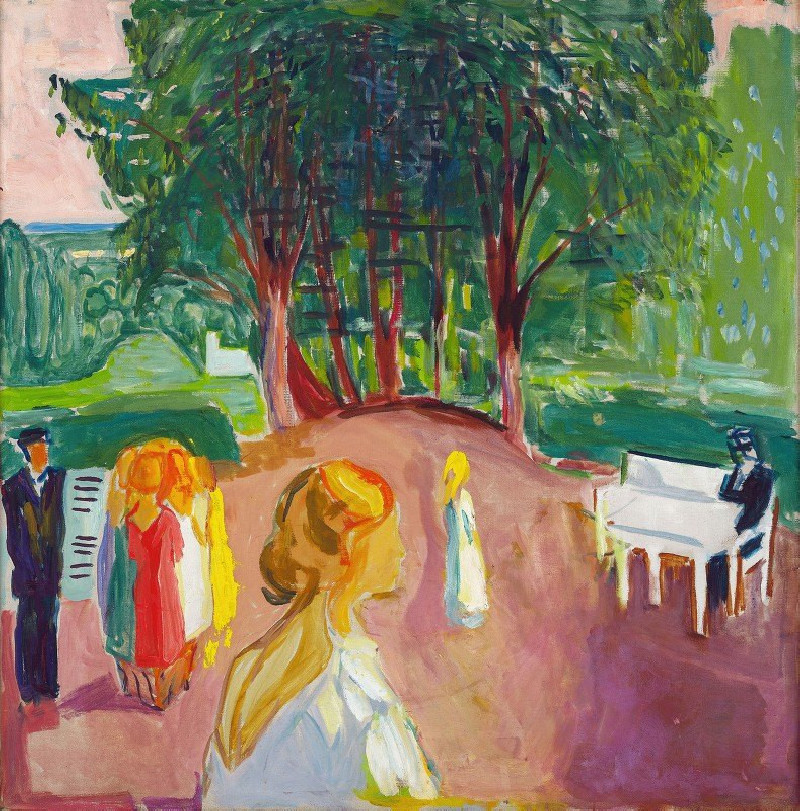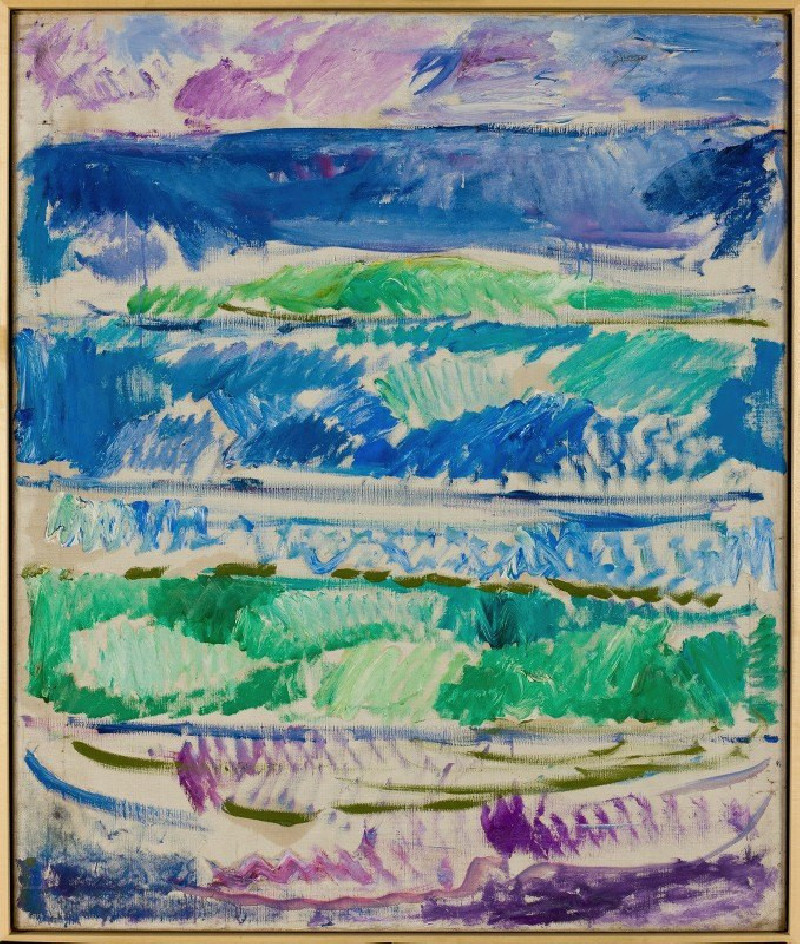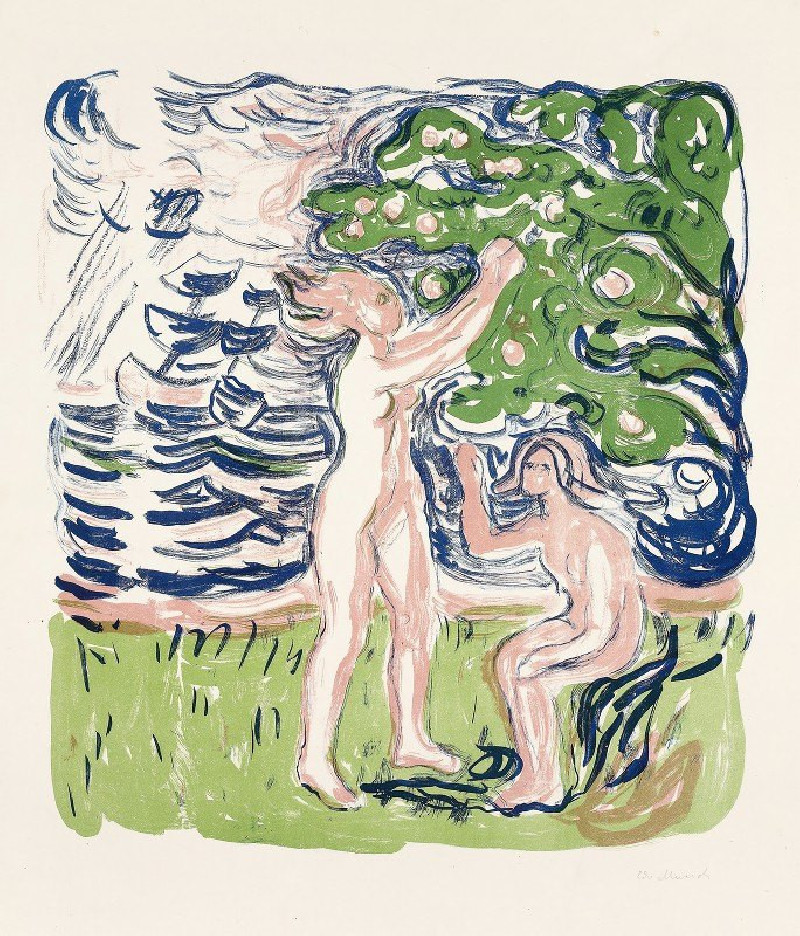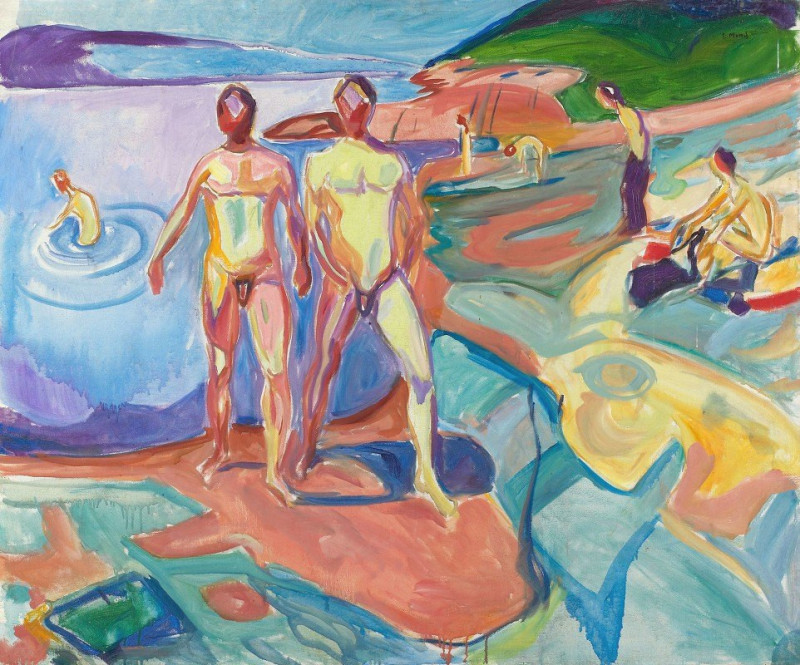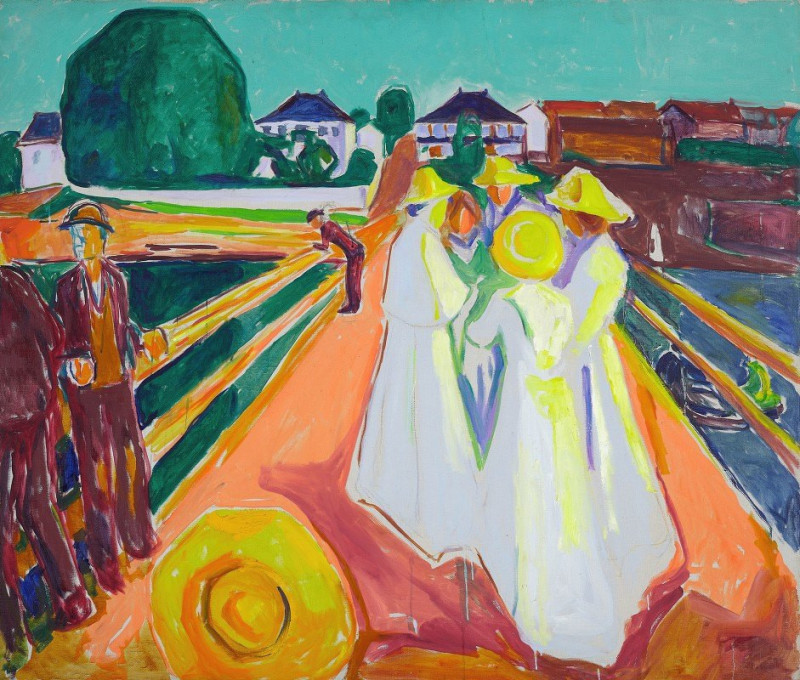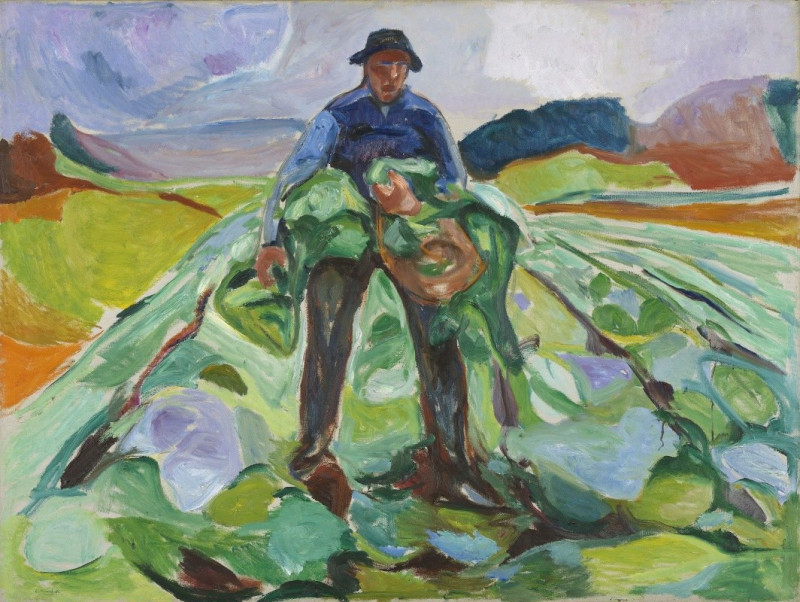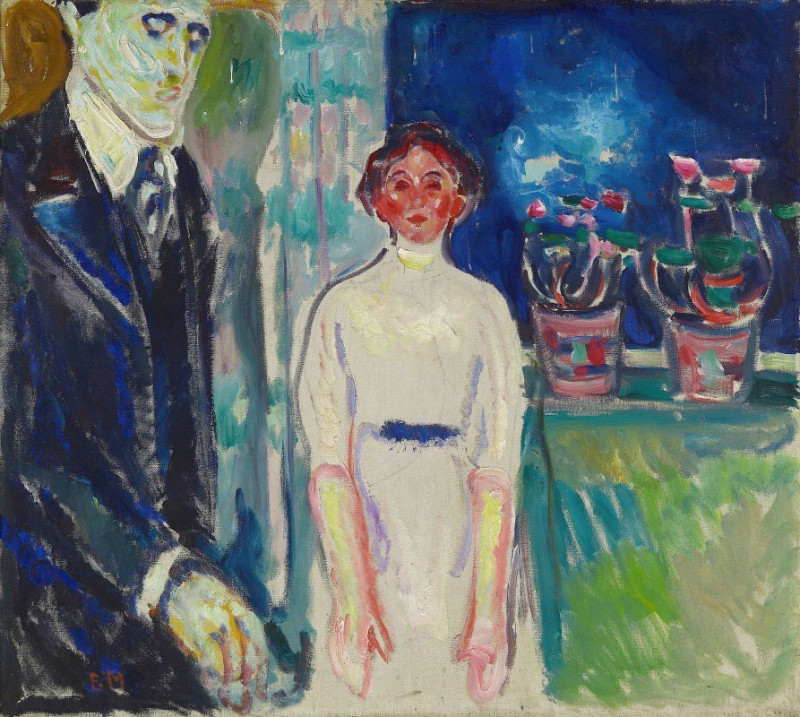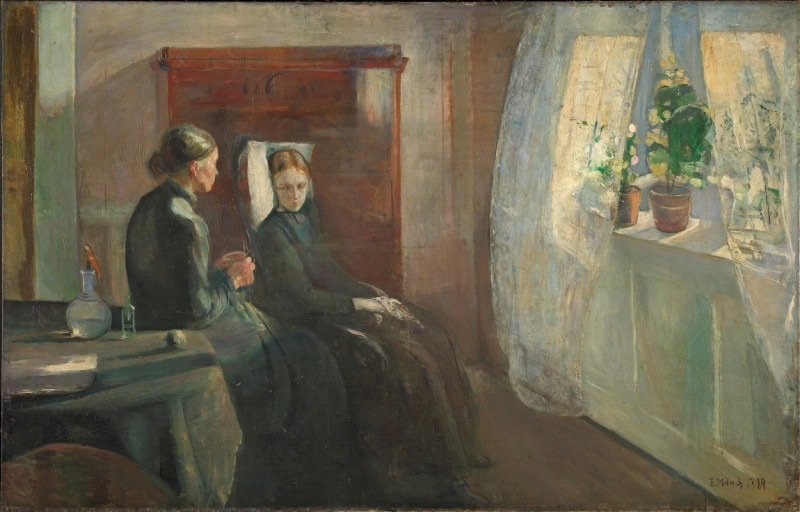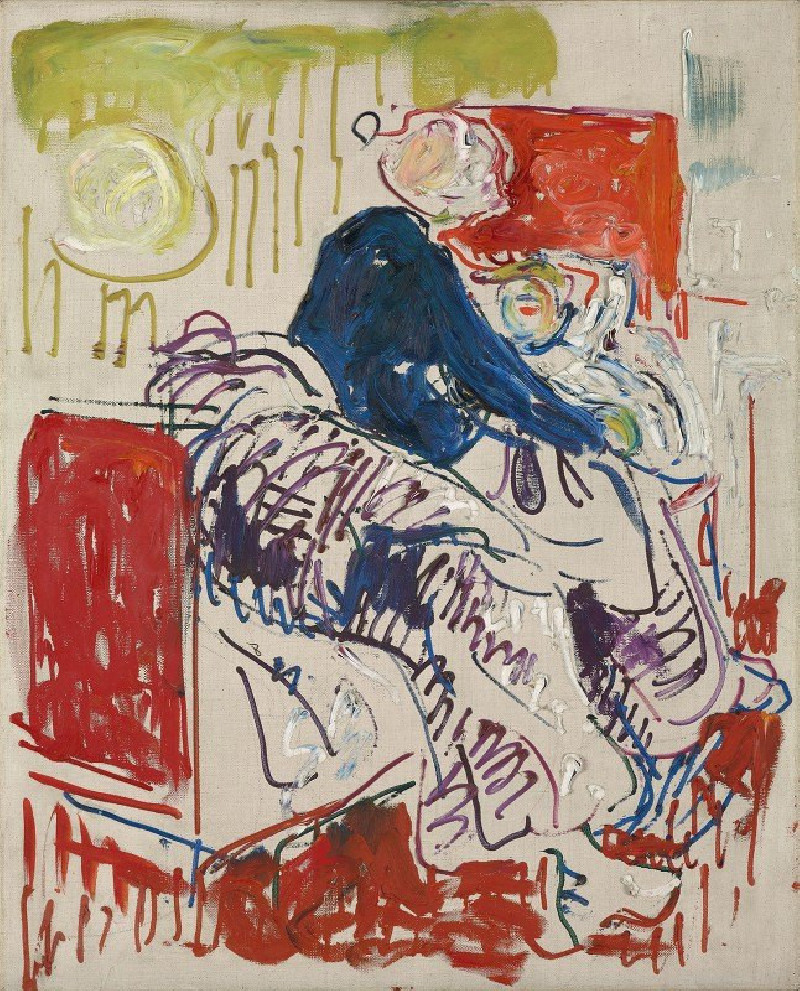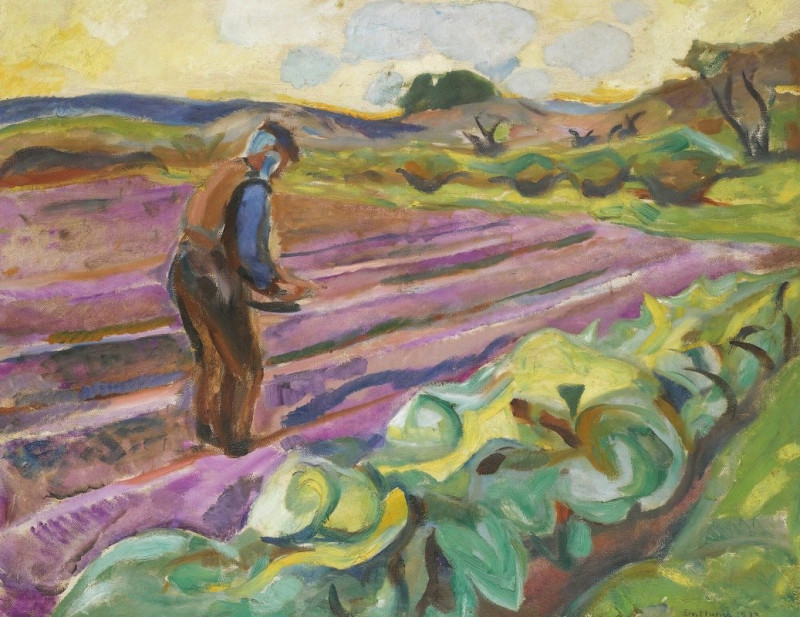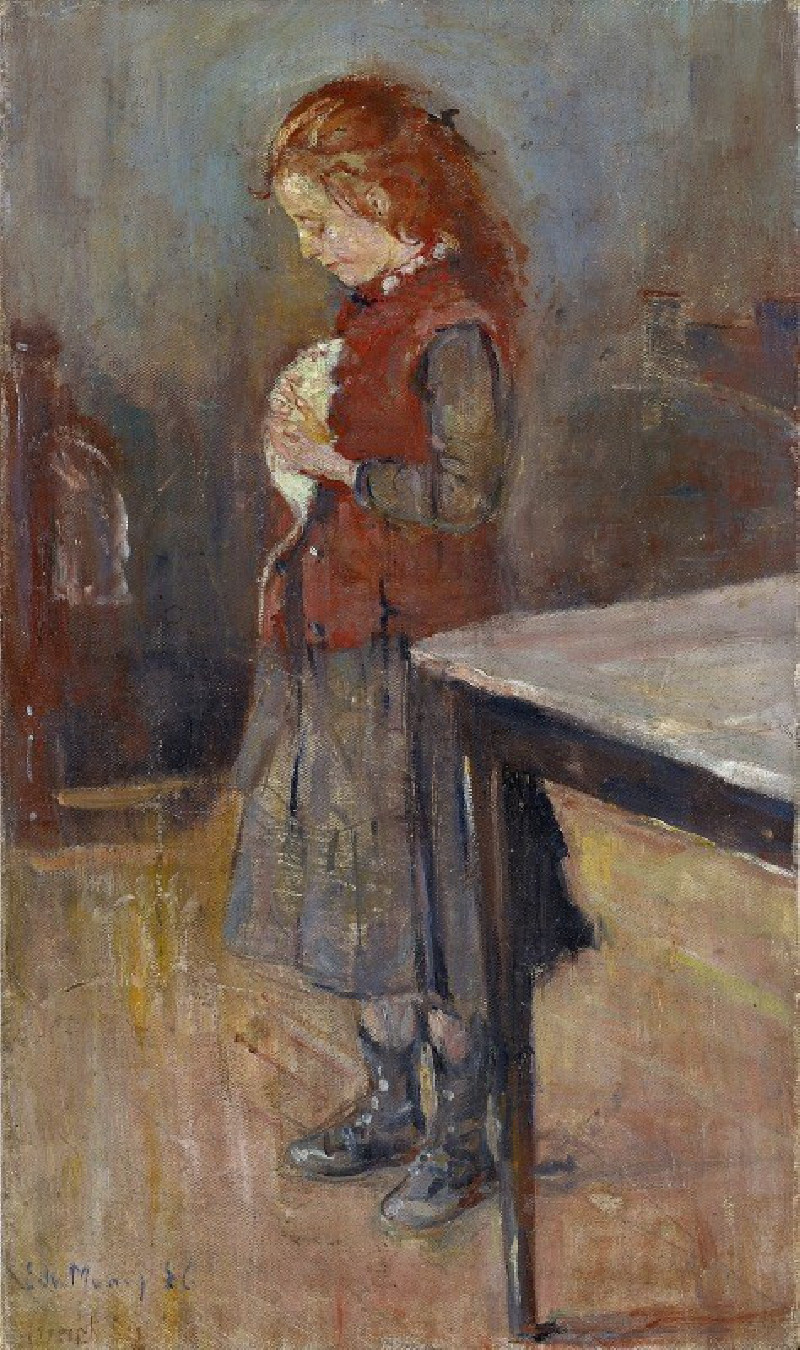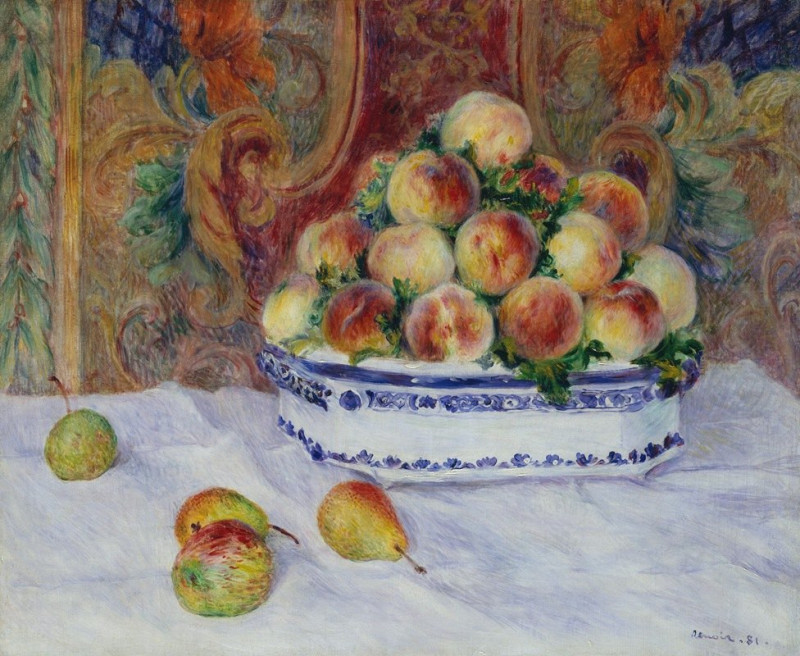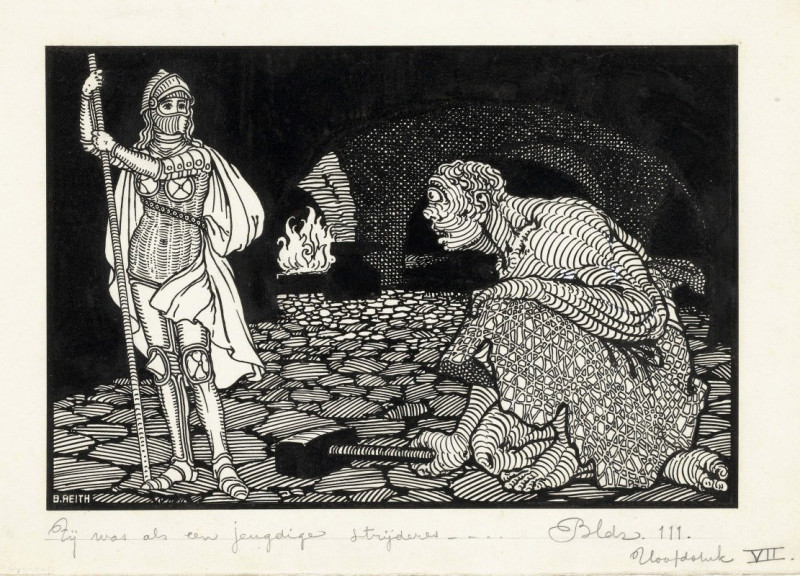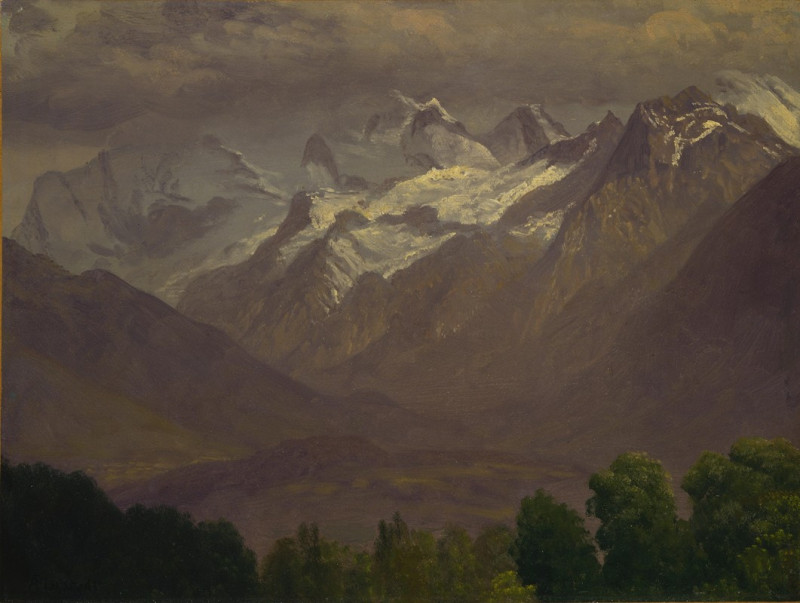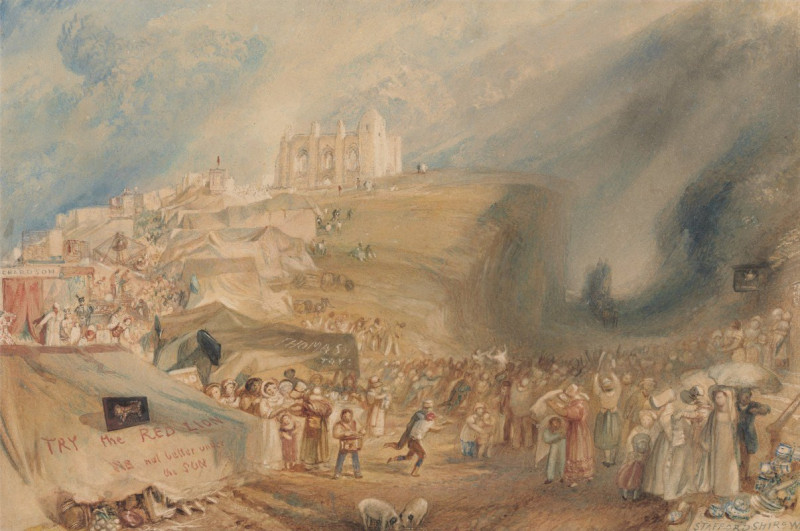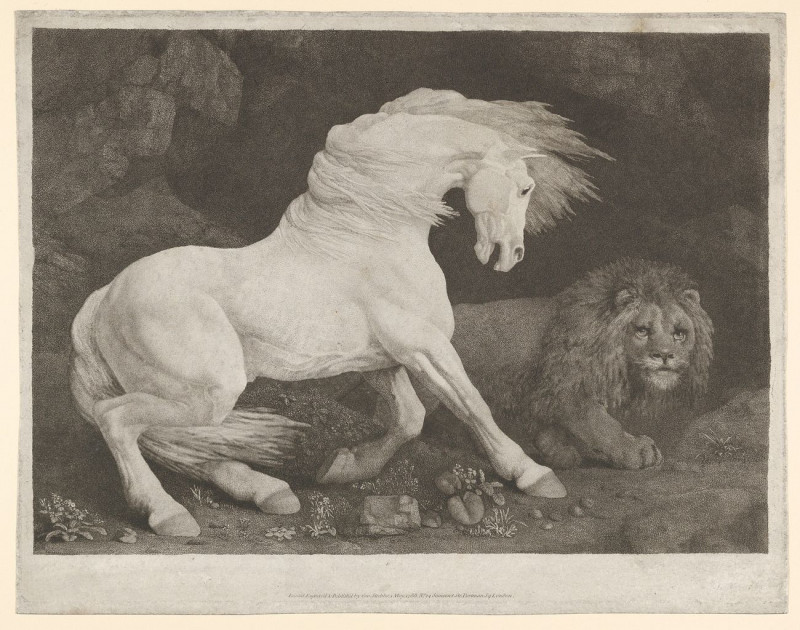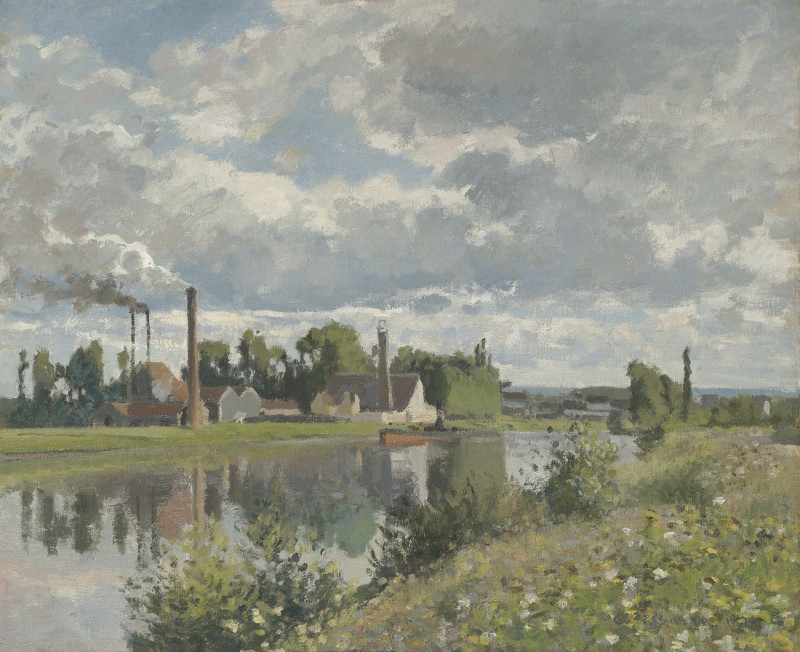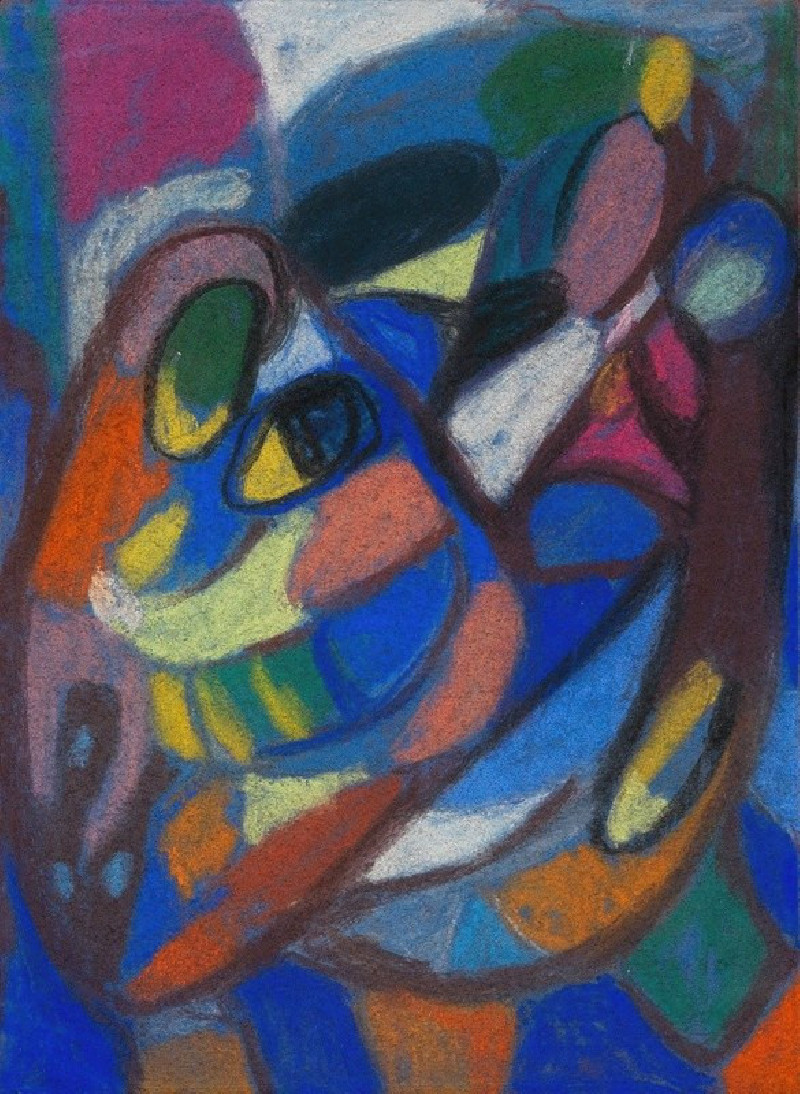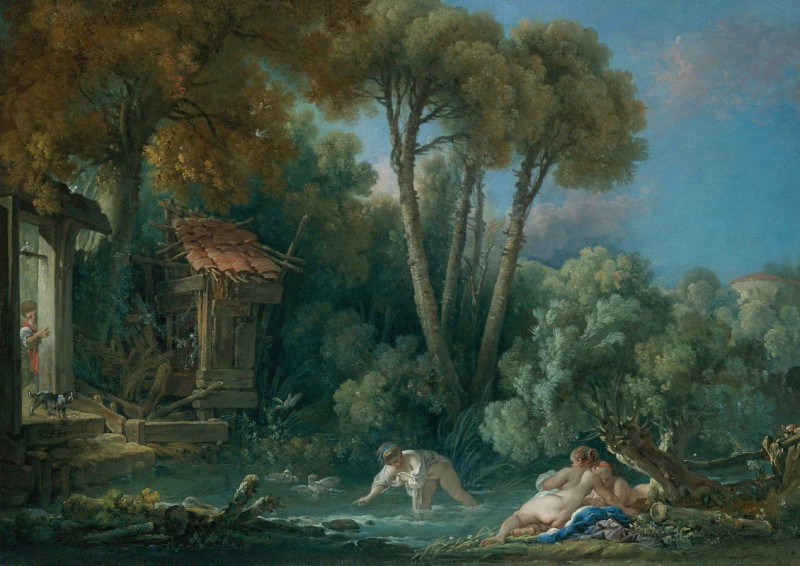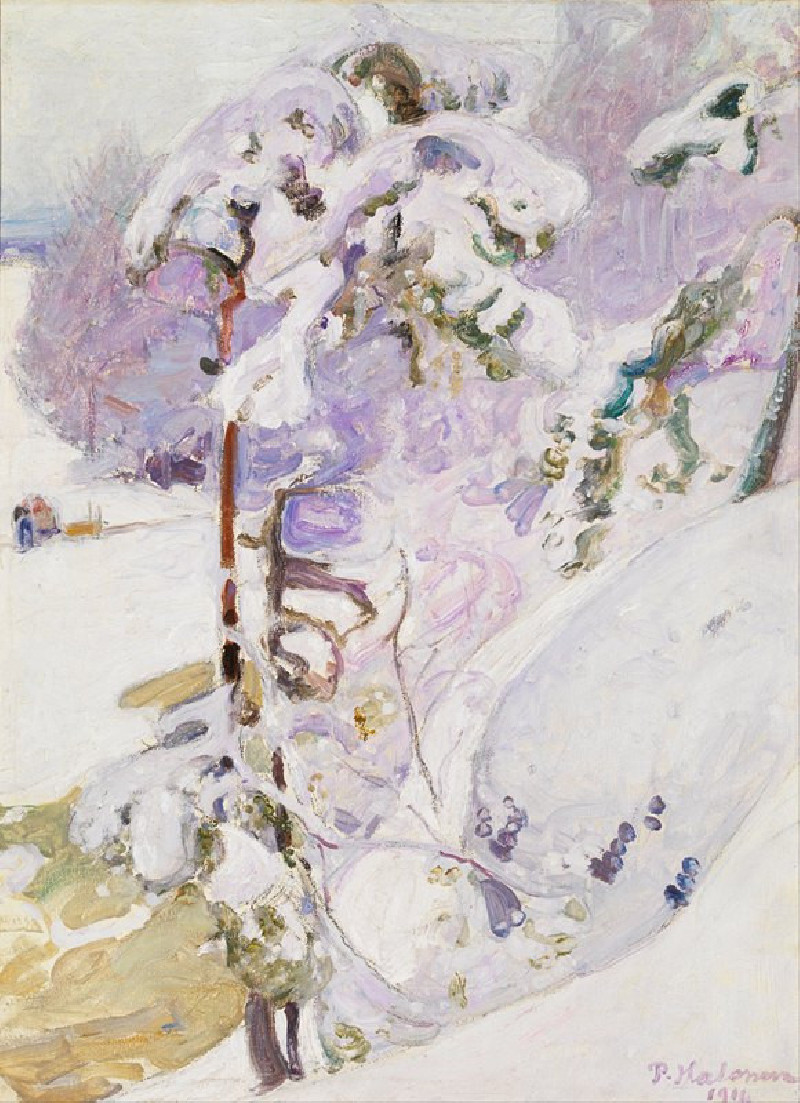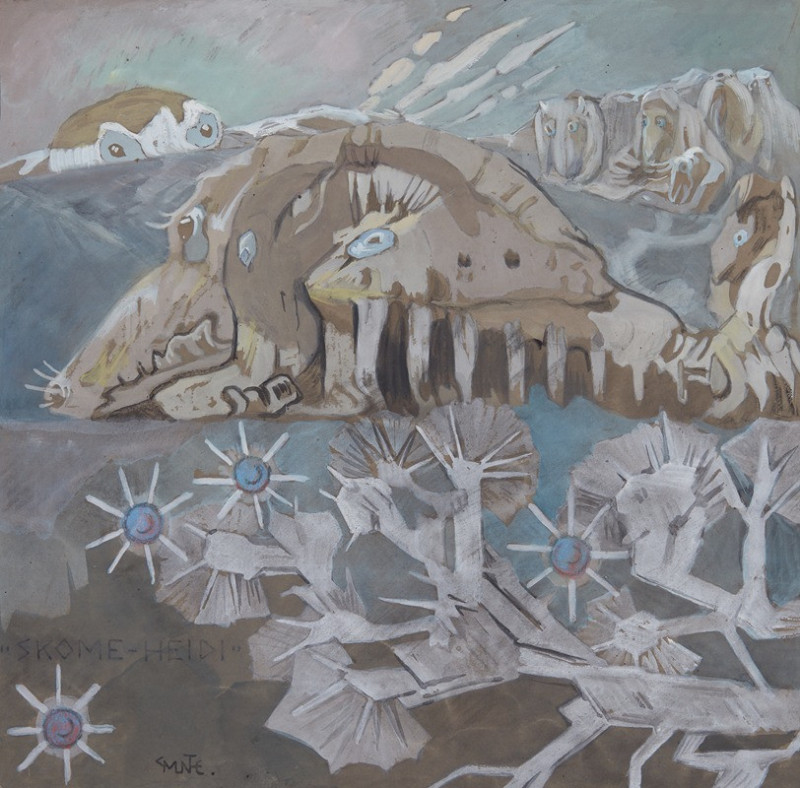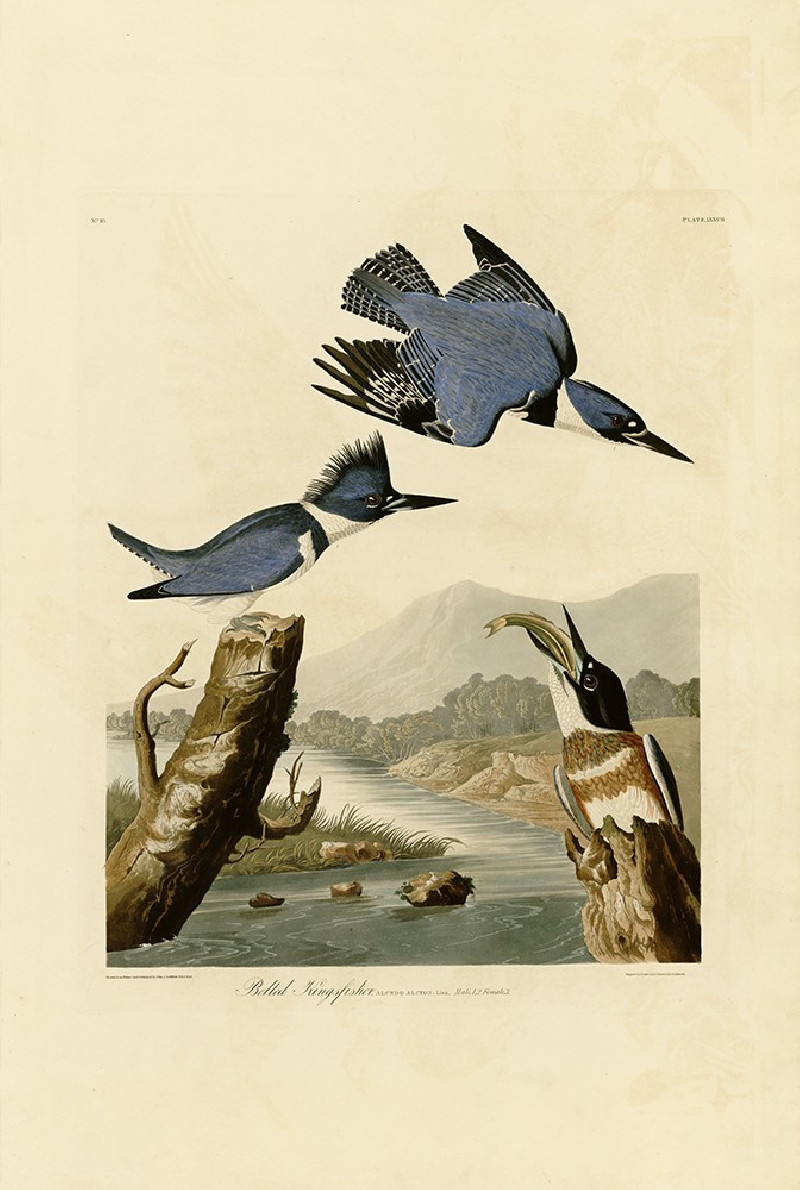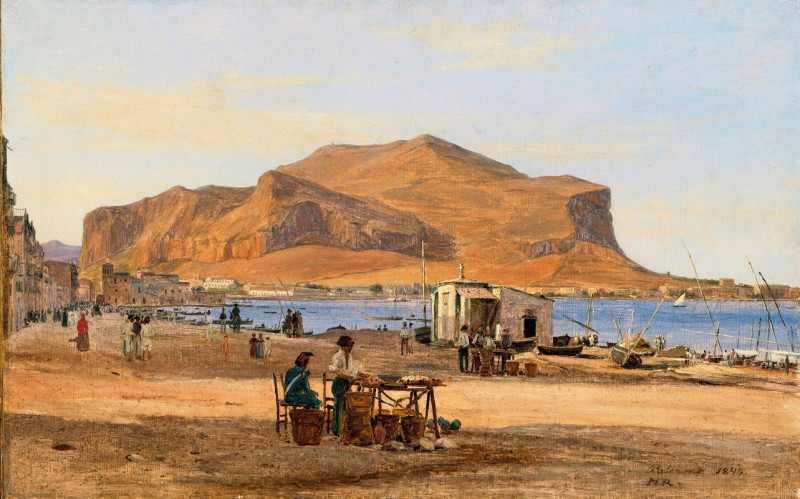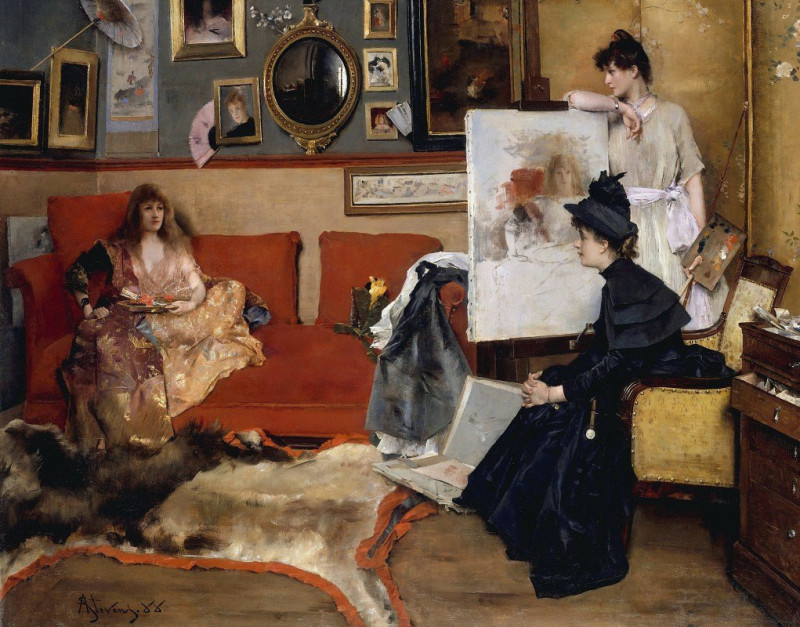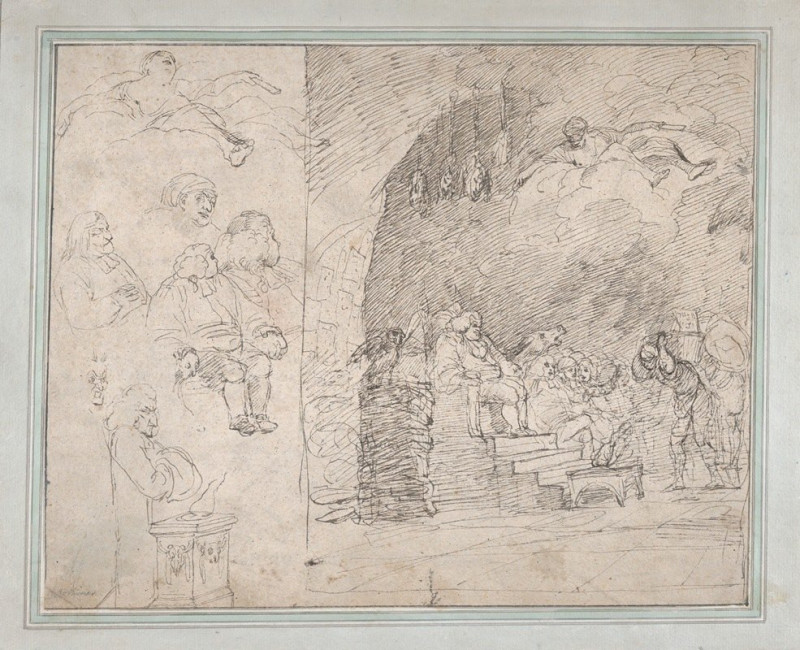Sunbathin (1915)
Technique: Giclée quality print
Recommended by our customers
More about this artwork
This painting, "Sunbathing" by Edvard Munch, created in 1915, depicts a serene coastal scene animated with vivacious brush strokes and robust colors. It features two figures, a man and a woman, seated on a rocky shore, with their bodies turned toward the sea that stretches wide and calm against a uniquely rendered sky. The play of light and color captures the idyllic warmth of sunbathing, a moment of leisure and exposure to nature's elements.Munch's brushwork conveys movement and emotion, with swirling skies and undulating sea that seem to mirror the inner state of the figures. The colors range from the cool blues and deep purples of the water to the warmer pinks and oranges of the sky at sunset or sunrise. This color dynamism adds to the emotional depth of the scene, suggesting a liminal time of day that is both calming and invigorating.The human figures are rendered in a somewhat abstract form, with loose definition that integrates them into the landscape, suggesting harmony between humanity and nature. The overall composition invites the viewer to reflect on the quiet moments of connection with the natural world.
Delivery
Returns
Edvard Munch (12 December 1863 – 23 January 1944) was a Norwegian painter. His best known work, The Scream (1893), has become one of Western art's most iconic images.
His childhood was overshadowed by illness, bereavement and the dread of inheriting a mental condition that ran in the family. Studying at the Royal School of Art and Design in Kristiania (today's Oslo), Munch began to live a bohemian life under the influence of the nihilist Hans Jæger, who urged him to paint his own emotional and psychological state ('soul painting'); from this emerged his distinctive style.

